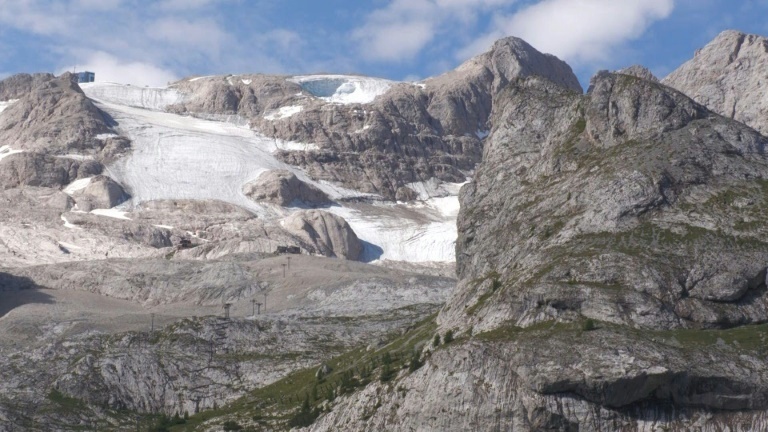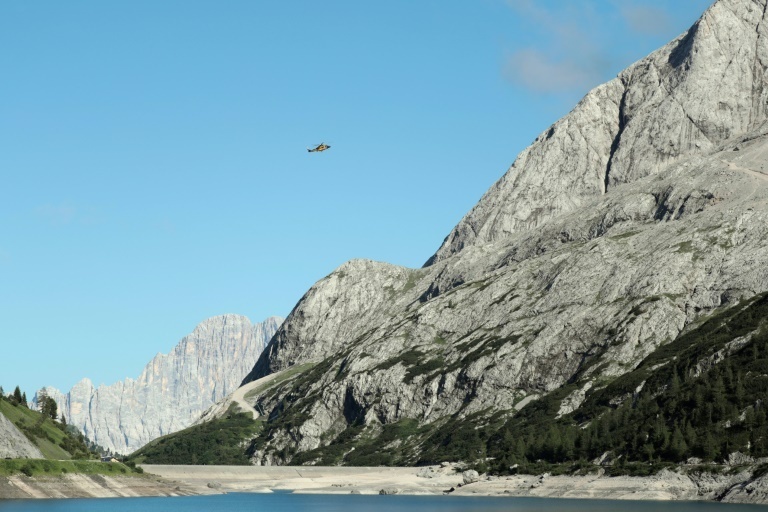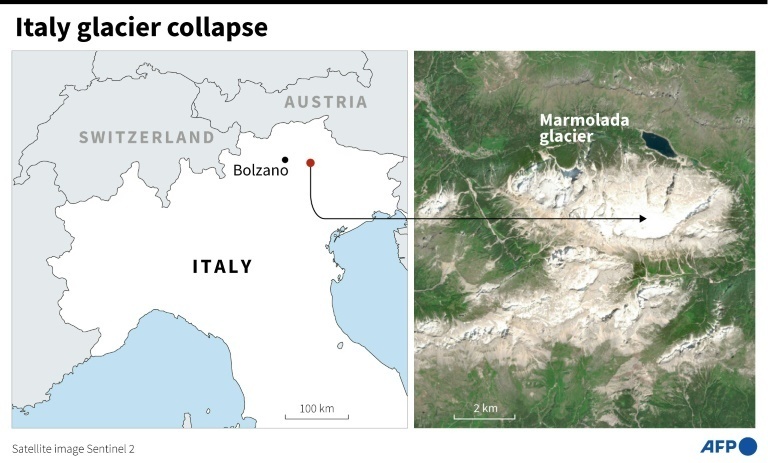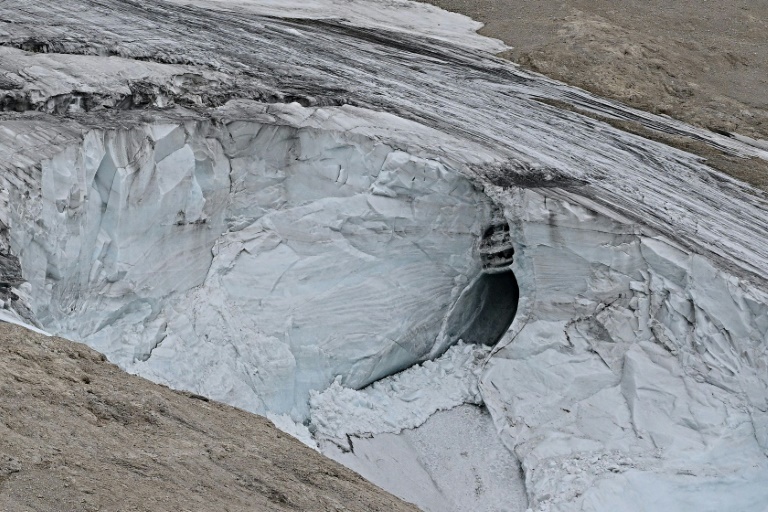Emergency services at the scene of a deadly avalanche in the Italian Dolomites recovered what body parts they could on Tuesday, with the dangers of venturing under the partially collapsed glacier slowing the search.
Rescue teams sent helicopters and drones up for a second day after Sunday's disaster, which saw at least seven hikers killed when a section of the country's largest Alpine glacier gave way, sending ice and rock hurtling down the mountain.
Italy has blamed the collapse on climate change and fears more of the glacier could come crashing down have prevented access to much of the area where hikers, some roped together, are believed to be buried.
Authorities had declared 14 people missing but revised that number down to five on Tuesday, after managing to trace some of those unaccounted for.

"Operations on the ground will only be carried out to recover any remains discovered by the drones, to ensure rescuers' safety," the Trentino Alpine Rescue Service said Tuesday.
Experts were surveying the area to determine how best to enable teams with sniffer dogs to get out onto the site safely on Wednesday or Thursday, the Service's national chief Maurizio Dellantonio told AGI news agency.
Relatives of people reported missing gathered at the town of Canazei, where recovered remains were placed in a make-shift morgue at a gymnasium.
"The important finds, not just bones, are first photographed, then recovered and put onto a helicopter" and flown to Canazei to be "catalogued and placed in cold storage", Dellantonio said.

- Still hope for survivors -
Helicopter pilot Fausto Zambelli told journalists some belongings had been spotted from the air, but it was not yet clear "if that means there are victims there, or if they belong to old hiking expeditions".
He said hope of finding survivors under the ice was slim, but not entirely gone.
"If there are 'pockets' (of air), there's still hope. Time is obviously short, but we still hope to find someone alive".
The disaster struck one day after a record-high temperature of 10 degrees Celsius (50 degrees Fahrenheit) was recorded at the summit of Marmolada, the highest mountain in the Italian Dolomites.

One of the bodies recovered belonged to a Czech who was travelling with a friend now registered as missing, the Czech foreign ministry told AFP.
The Trento public prosecutor's office has opened an investigation to determine the causes of the tragedy.
The glacier, nicknamed "queen of the Dolomites", feeds the Avisio river and overlooks Lake Fedaia in the autonomous Italian province of Trento.

ide/bp
© Agence France-Presse
Your content is great. However, if any of the content contained herein violates any rights of yours, including those of copyright, please contact us immediately by e-mail at media[@]kissrpr.com.
Source: Story.KISSPR.com

